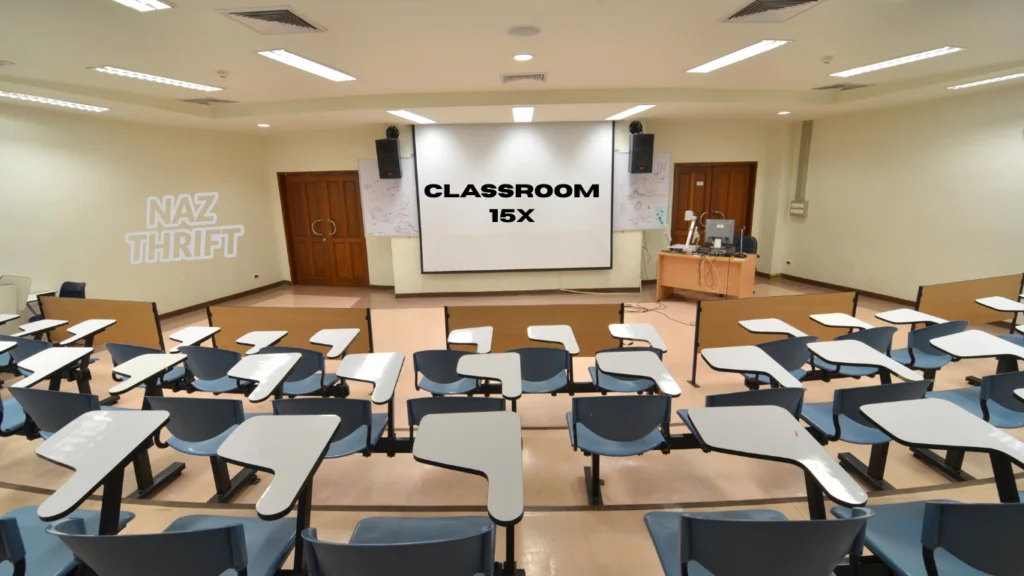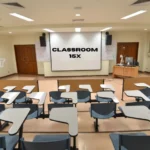Introduction
Education is evolving—and so are the spaces and systems we call “classrooms.” One term gaining traction lately is “Classroom 15x.” While not yet standardized, Classroom 15x refers to a new generation of learning environments that combine flexible spaces, digital tools, and adaptive instruction to boost engagement and outcomes.
In this article, I’ll unpack what “Classroom 15x” means in different contexts, explore its key features and benefits, consider challenges and how to overcome them, and provide guidance on how to adopt it step by step. My aim is to produce a reader-friendly, trustworthy resource that addresses what educators, school leaders, and students need to know.
What Does “Classroom 15x” Mean?
Because “Classroom 15x” is still emerging, you’ll find multiple interpretations across blogs and edtech sites. Below are the most common meanings:
-
A reimagined physical classroom model
In many uses, “15x” describes a learning environment with modular furniture, zones for collaboration or independent work, and strong technology support. The goal is to make the space adaptive and student-centered. -
An integrated tech-driven learning system or LMS
Some view Classroom 15x as a platform for managing assignments, analytics, feedback, and instruction—more than just a room layout but the system behind teaching and assessment. -
A gaming or “refresh break” portal
In a few sources, Classroom 15x is an open, browser-based gaming site used during short breaks to reset attention and stimulate students. In that sense, it’s less about curriculum and more about cognitive refreshers.
In many forward-thinking school plans, the first two meanings are combined: space + system, design + technology. The gaming meaning is more niche but sometimes integrated as part of attention management.
Key Features & Design Principles
Across interpretations, the following elements tend to appear in descriptions of Classroom 15x:
Flexible Physical Layouts
-
Furniture (desks, chairs, partitions) that can be moved or reconfigured
-
Zones within the classroom for small groups, quiet individual work, presentation, maker activities
-
Open, modular layouts rather than fixed rows
Technology Integration
-
One device (tablet, laptop, or shared device) per student or pair
-
Interactive displays or smartboards
-
Apps, software, analytics dashboards, and learning systems
-
Cloud access, resource libraries, and easy content sharing
Adaptive & Personalized Instruction
-
Systems that respond to student performance—slower pacing, extra practice, extension tasks
-
Student choice in tasks, formats, or project paths
-
Real-time or frequent formative feedback
Blended & Hybrid Modes
-
Seamless switching between face-to-face instruction and online modules
-
Remote or hybrid participation fully supported
-
Asynchronous work and synchronous collaboration
Intentional Breaks & Refreshers
-
Short gaming, puzzles, or cognitive tasks used as structured breaks
-
Micro-pause activities embedded in lessons
-
Use of games especially in “gaming portal” interpretation
Data-Driven Iteration
-
Use of analytics, engagement tracking, error rates, time-on-task to inform decisions
-
Regular feedback loops (student voice, teacher reflection)
-
Adjustment of layout, grouping, and pacing over time
Benefits of Classroom 15x
For Students
-
Increased engagement through varied modes and tools
-
Learning paced to individual needs
-
More choice, autonomy, and agency
-
Better collaboration and peer interaction
-
Enhanced digital fluency and readiness for future work
For Educators & Institutions
-
Insight from real-time data to intervene when needed
-
Efficiency in tracking, assessment, and resource delivery
-
Flexibility in instructional design
-
Ability to scale or adapt to different class sizes or subjects
-
Continuous improvement through feedback and iteration
Challenges & How to Mitigate Them
Implementing a Classroom 15x model (or something close to it) involves overcoming obstacles. Here are common challenges and strategies:
| Challenge | Strategy / Mitigation |
|---|---|
| Weak or unreliable infrastructure (internet, power) | Start with robust baseline, ensure backups, incremental rollout |
| High cost of devices, furniture, software | Phase in changes, use grants or partnerships, begin with small pilot |
| Teacher resistance or limited time for training | Offer ongoing support, peer coaching, plan gradual adoption |
| Complexity of managing many tech tools | Limit new tools to 1–2 at a time, prioritize usability |
| Equity/gap issues (some students lack devices at home) | Provide loaners, offline options, blended tasks |
| Policy or content filtering in schools | Align with acceptable-use policies, whitelist educational tools |
| Technical failures or downtime | Always have analog backups, clear fallback plans |
How to Implement Classroom 15x: Roadmap
Here’s a structured approach to bring this model into your school or classroom:
-
Clarify vision and scope
Decide which elements you’ll adopt first (space, tech, adaptive tools) and define your goals. -
Pilot in one classroom or grade
Choose a teacher willing to experiment. Start small before scaling. -
Audit and upgrade infrastructure
Check network bandwidth, power outlets, device inventory, charging, etc. -
Select core tools carefully
Choose an LMS or dashboard, interactive software, and collaboration tools that are stable and user-friendly. -
Design flexible layouts
Rearrange furniture, designate zones, test movement of desks, define norms for transition between zones. -
Provide professional development
Train teachers not just technically, but in pedagogical shifts (student choice, micro-lessons, data use). -
Build routines & microstructures
E.g., lessons in 10- or 15-minute segments, mini-breaks, transitions, rotation among zones. -
Collect data and feedback
Use analytics, surveys, observational notes, student interviews. Adjust as you go. -
Iterate and refine
Adapt layouts, toolsets, grouping strategies, pacing based on what is working or not. -
Scale gradually
Bring more classes, subjects, rooms online, but always based on lessons learned. -
Sustain & evolve
Update hardware/software, revisit teacher support, incorporate new best practices.
When Classroom 15x Means Gaming / Refresh Breaks
In the “gaming portal” interpretation, Classroom 15x is a browser-based platform offering short, no-install games used as purposeful cognitive breaks. Key points for this usage:
-
Games run via browser (no download) so devices like Chromebooks or fragile machines can participate
-
Breaks are kept very short (5–10 minutes) and structured
-
Game types often include puzzles, strategy, logic, or stealth challenges that stimulate thinking
-
The idea is to refresh attention, reduce fatigue, and help transition between segments
If you include this kind of break tool, treat it as one ingredient—not the core of the model. The main time should be spent on content and learning.
Best Practices & Tips
-
Start minimal: pick a few key changes rather than a full overhaul
-
Use transition signals (bells, timers) when shifting between zones or modes
-
Chunk lessons in 10–15 minute blocks for better attention
-
Use many modalities (video, reading, discussion, practice)
-
Let students help design zones, suggest tools, propose games
-
Use data weekly to adjust pacing, grouping, tool use
-
Always have fallback non-digital options
-
Teach norms and digital citizenship explicitly
-
Rotate tools over time; don’t stick with one forever if it’s not working
Summary & Why It Matters
Classroom 15x is not just a catchy label—it points toward the direction schools are moving: more adaptable spaces, data-informed instruction, and student-centered flexibility. While the exact definition is still fluid, the core ideas (flexibility, technology, adaptive learning, purposeful breaks) are grounded in many successful classroom innovations already in use.
When thoughtfully implemented—starting small, iterating, and always centering on learning goals—Classroom 15x can help students engage more deeply, allow teachers to respond more precisely, and create a culture of continuous improvement. It’s not about flashy tech or gadgets, but about rethinking how classrooms support learning in the 21st century.
Read More: Evaluating 5StarsStocks.com: Guide for Investors
Conclusion
Classroom 15x represents a forward-looking vision for education—one that blends flexible space, digital tools, responsive instruction, and intentional pauses to create more engaging, effective learning. While interpretations vary (room design, learning systems, or even gaming breaks), the most powerful form combines space + system to support students and teachers in real time. Realizing it requires careful planning, infrastructure checks, gradual adoption, and a willingness to adapt based on feedback—not a sweeping overnight change.
When done well, this model empowers students to take ownership, enables teachers to act early with insight, and makes classrooms more dynamic and human-centered. As schools navigate change, Classroom 15x offers a roadmap to evolve beyond rows of desks toward learning environments that respond, support, and grow. If you’d like, I can also write a version focused for Pakistani schools or practical templates. Do you want me to prepare that?
FAQs
1. What exactly is Classroom 15x?
Classroom 15x is a concept for modern education combining flexible physical layout, integrated technology, adaptive systems, and structured breaks. Its goal is higher engagement, more personalization, and better learning outcomes.
2. How long does it take to implement Classroom 15x?
A phased implementation often spans one semester up to a full academic year. Layout changes can happen quickly, while deeper integration of tech and adaptive systems unfolds gradually.
3. What technology do I need for Classroom 15x?
Core requirements include student devices (tablets or laptops), reliable WiFi, an LMS or dashboard with analytics, interactive displays (optional), and software for collaboration and assessment.
4. Can Classroom 15x work in small or old classrooms?
Yes. You can use multipurpose furniture, rotate zones over time, use vertical storage, and gradually upgrade. The principles adapt to space constraints.
5. How often should I schedule gaming or break sessions?
If using gamified breaks, aim for 5–10 minutes between lesson chunks (e.g. every 30–45 minutes). They should be intentional resets, not extended free time.










